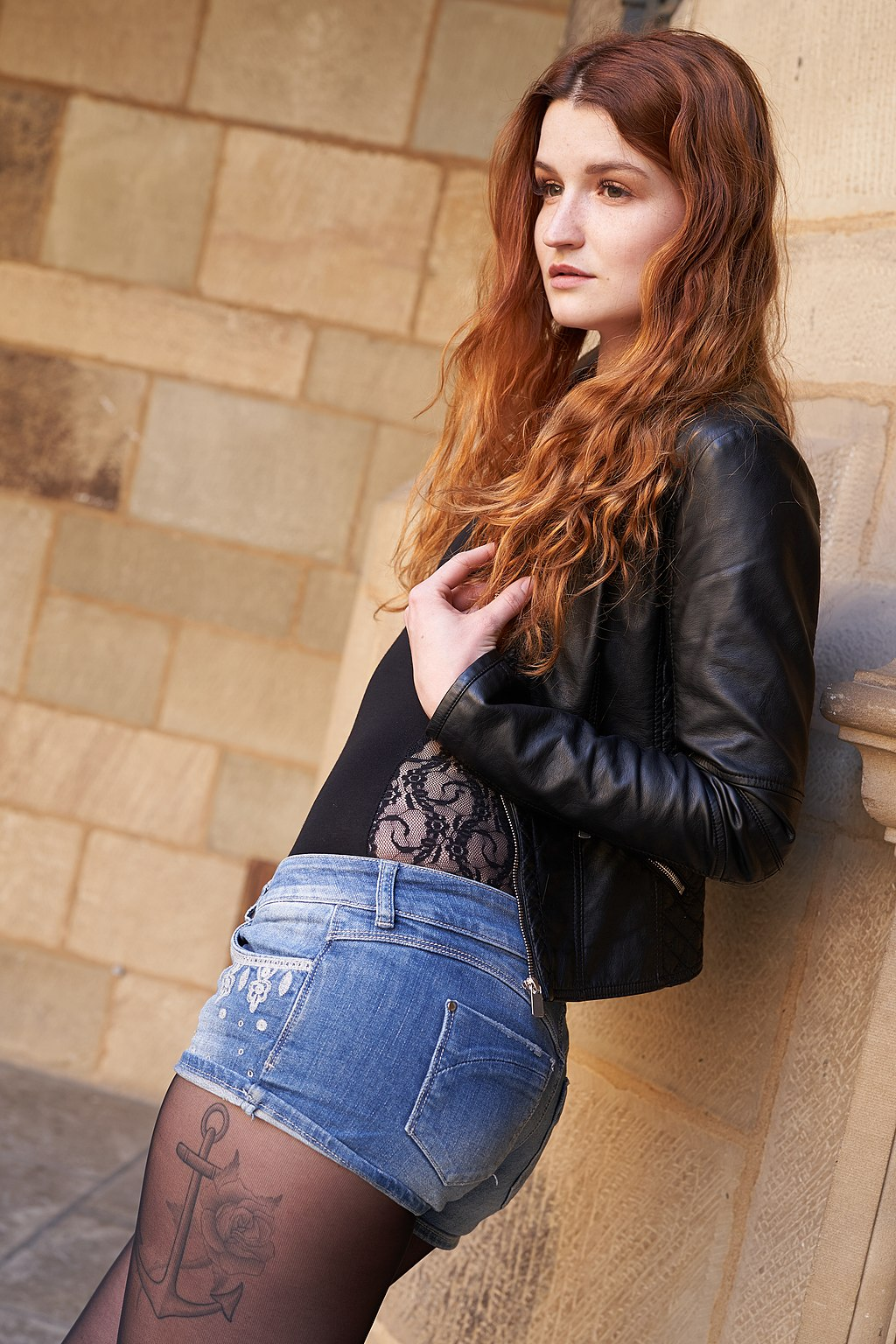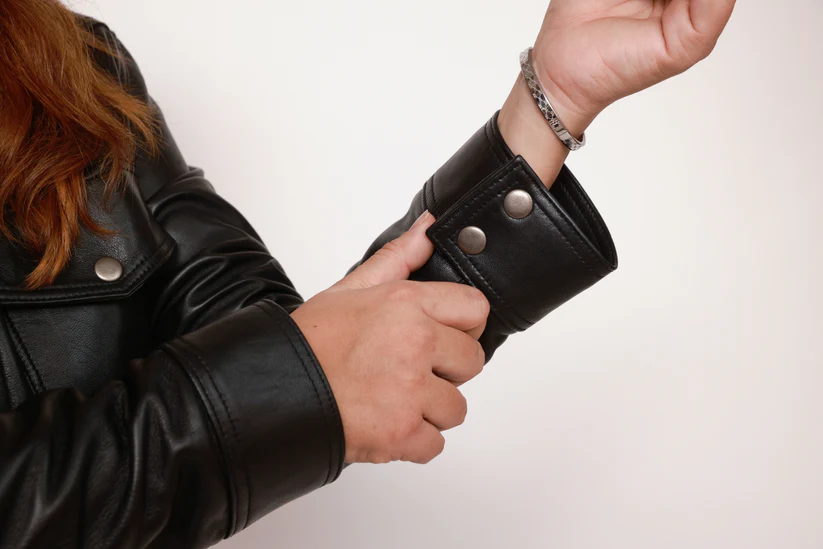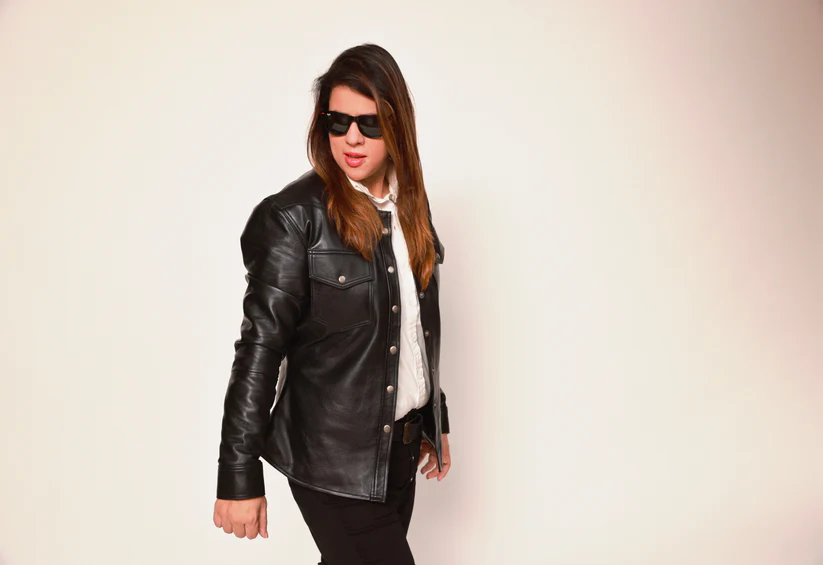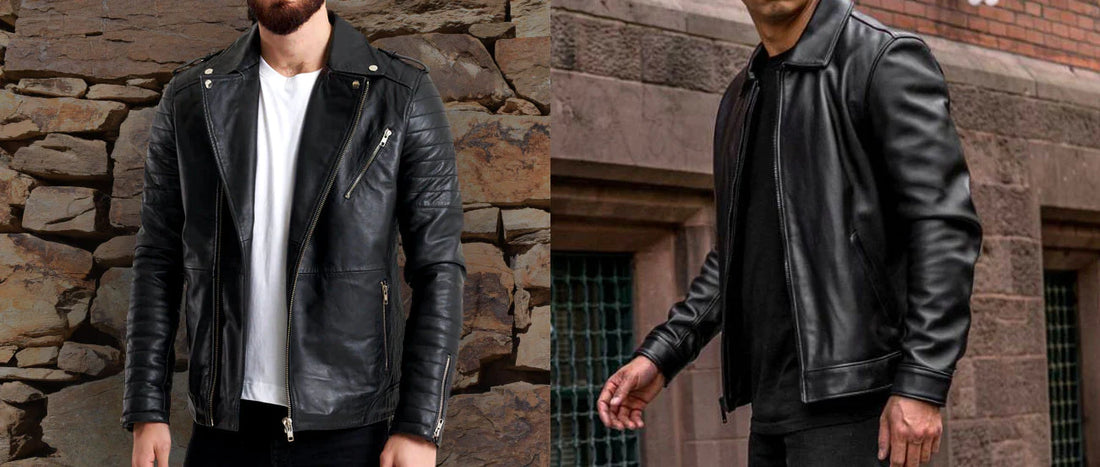If you think it's time to enhance the overall quality of your wardrobe, you might want to consider adding a women's leather shirt jacket to your repertoire. Leather will never stop being chic; the material is supple, the finish unmistakeable, and the breathability can't be matched by any synthetic material on the market. A quality brand from a good collection is a wonderful addition to any wardrobe.
But leather care can be intimidating. How do you clean it? What do you do when it gets wet? Leather jackets are both versatile and luxurious, and suitable for casual or dressy occasions, but only if they are kept looking their best.
Fortunately, with a few easy tips, caring for your leather jacket does not have to be a mystery. Once you have a couple of basic supplies and a little knowledge, your women's leather shirt jacket will be a frequent centerpiece of your favorite outfits.
Leather Jackets and Rain: What to Know About Water

As a natural material, leather has a complex relationship with water. Some faux leathers are totally waterproof, except for the seams; but it is important to remember that even they are not immune to moisture damage, because while water from the outside won't penetrate them, they tend to gather sweat and humidity and hold them close to the skin, meaning that they can quickly become smelly.
Real leather jackets, on the other hand, are not waterproof in the same way. Depending on the finish they may resist some moisture, but they also wick and breathe, which means that in prolonged rain they can become sodden.
Once leather is thoroughly wet it is vulnerable to a few kinds of damage.
Watermarks
Watermarks are the most obvious; this happens because some of the leather's natural oils are lifted by the water permeating the leather, and end up being washed away. The result is dull, ashy spots on what used to be smooth, glossy leather.
The Solution
When you purchase your leather jacket, you will be presented with many modern options to choose from for keeping it in tip top shape. Personally, my favorite option for watermarks is neatsfoot oil. It is a natural oil that has been used on leather goods for centuries to restore that soft glow that only real leather has. It also helps repel water the next time you're caught in the rain.
Just use a soft rag with a small amount of oil and buff it on, being sure to work it into the seams and gussets. A little goes a long way.
Stiffness
One of the hallmarks of a quality leather jacket is its soft feel and comfortable fit. One good rainstorm can take your finely crafted, sleek and supple jacket and turn it stiff and ugly.
The Solution
To prevent stiffness after your leather gets wet, you will want to allow it to dry almost completely before you work with it. First try to blot off as much water as possible with a soft cloth. Hang it carefully and let it air dry at room temperature, but keep an eye on it; the optimal moment to work with it is when it is still a little damp.
Once it is just damp but not too dry, apply neatsfoot oil sparingly with a soft cloth. as you work, gently bend and pull and roll the leather between your hands. This will work out the developing stiffness, allowing the leather to dry just as supple and luxurious as ever.
Stretching
This is probably the most feared possibility when a leather jacket gets soaked: when wet it is very vulnerable to stretching. It is a mistake to put it on a standard coat hanger to dry, as the weight of wet leather will pull downward on the shoulders and your jacket could fit poorly forever after.
The Solution
First, how the jacket dries matters a lot. You want it to be shaped in a such a way that you will be comfortable wearing it, as it will be stiff the first time you put it on; don't allow it to dry with wrinkles or with the sleeves oddly positioned.
Hanging
Begin by gently blotting as much water off of the leather as possible. Then figure out how to hang the jacket.
If you happened to have a mannequin that would be optimal. If not, consider arranging a sturdy wooden hanger with an old towel folded in thirds and draped over the hanger's shoulders. Putting the jacket over the towel will allow the weight of the jacket to be better distributed, and also start to absorb the moisture from the shoulders.
Waiting
Let the jacket dry slowly for at least a couple of days before you try to work with it. Once it has dried almost completely, it's ready for that neatsfoot oil, which will restore the natural oils to the leather and also help soften and work out the stiffness that has begun to creep in.
Prevention: Keeping Black Leather Jackets From Getting Too Wet

We all know that things come up unexpectedly; however you may intend to keep your jacket out of the rain, sometimes you will find yourself caught in a downpour. What can you do to prevent these occasions from ruining your jacket--or creating a lot of work for you?
Beeswax for Waterproofing
Beeswax is an ancient solution. While it will not truly waterproof your leather, it will make it much more resistant, meaning that your jacket can withstand much longer rainshowers with no ill effects.
There are many other options as well, such as waterproofing sprays. Just make sure you spot test any product on a low-visibility part of the garment before applying it all over, in case you learn too late that you don't like how it impacts the finish.
Caring for Your New Leather jacket

If you need every article of clothing to be strictly wash and wear then leather is not for you. It absolutely cannot go in the washer, and it requires careful drying. On the other hand, if one rainstorm was enough to ruin leather, bikers wouldn't wear it at all; they often need to roll in the rain.
Black leather jackets are one of the most classic elements of a woman's wardrobe. A jacket with a good fid disguises imperfections, creates streamlined curves, and creates a look of quiet elegance. Layering a black leather jacket with different outfits can create a range of styles to fit any occasion.
Don't let the maintenance required by a leather jacket intimidate you. Grab some natural neatsfoot oil and beeswax, save scraps from an old flannel shirt to spread them with, and enjoy the look of quiet luxury that only leather can give.

